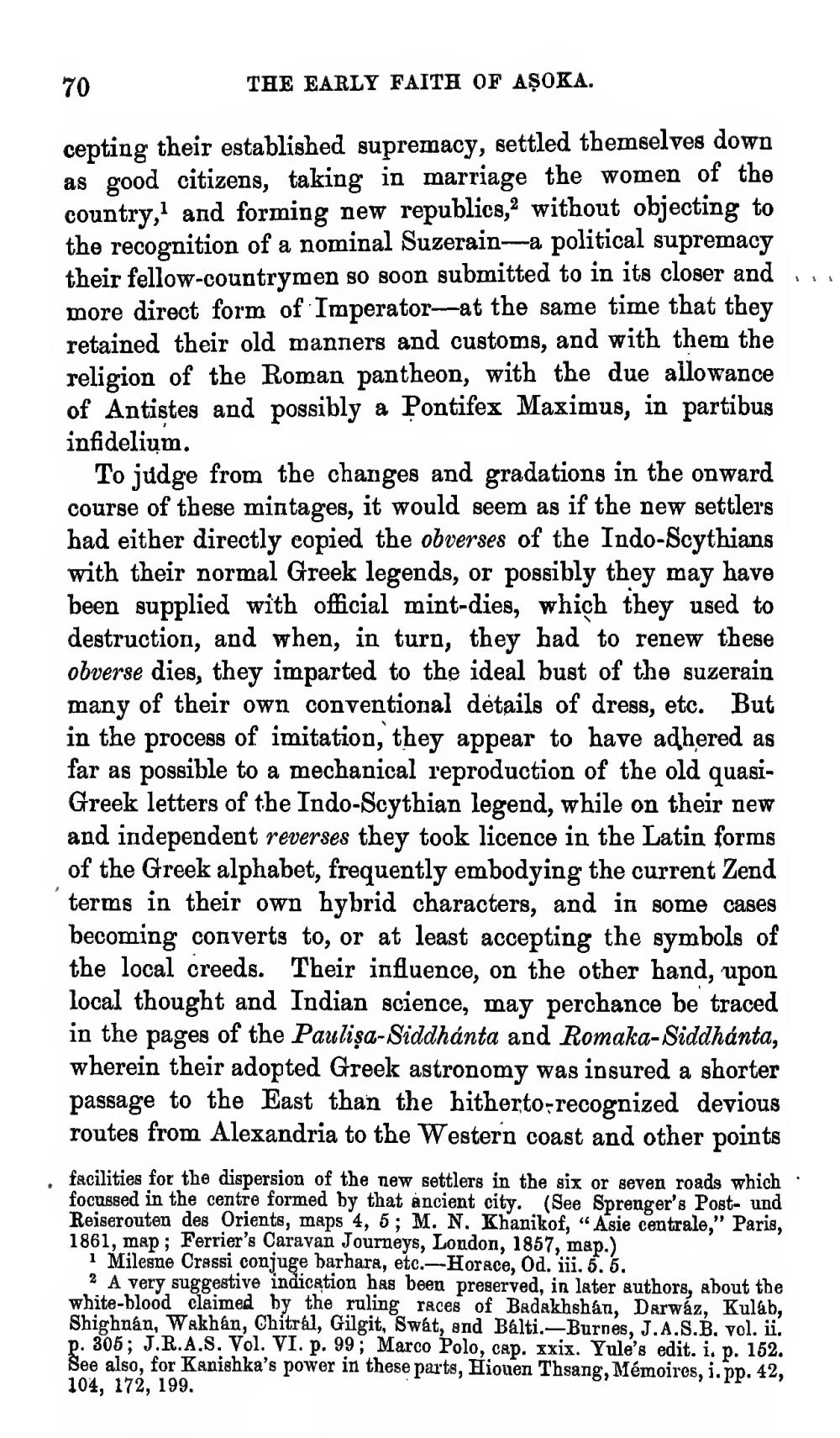________________
70
THE EARLY FAITH OF AŞOKA.
cepting their established supremacy, settled themselves down as good citizens, taking in marriage the women of the country, and forming new republics, without objecting to the recognition of a nominal Suzerain---a political supremacy their fellow-countrymen so soon submitted to in its closer and more direct form of Imperator at the same time that they retained their old manners and customs, and with them the religion of the Roman pantheon, with the due allowance of Antistes and possibly a Pontifex Maximus, in partibus infidelium.
To judge from the changes and gradations in the onward course of these mintages, it would seem as if the new settlers had either directly copied the obverses of the Indo-Scythians with their normal Greek legends, or possibly they may have been supplied with official mint-dies, which they used to destruction, and when, in turn, they had to renew these obverse dies, they imparted to the ideal bust of the suzerain many of their own conventional details of dress, etc. But in the process of imitation, they appear to have adhered as far as possible to a mechanical reproduction of the old quasiGreek letters of the Indo-Scythian legend, while on their new and independent reverses they took licence in the Latin forms of the Greek alphabet, frequently embodying the current Zend terms in their own hybrid characters, and in some cases becoming converts to, or at least accepting the symbols of the local creeds. Their influence, on the other hand, upon local thought and Indian science, may perchance be traced in the pages of the Paulişa-Siddhanta and Romaka-Siddhanta, wherein their adopted Greek astronomy was insured a shorter passage to the East than the hitherto-recognized devious routes from Alexandria to the Western coast and other points
facilities for the dispersion of the new settlers in the six or seven roads which focussed in the centre formed by that ancient city. (See Sprenger's Post- und Reiserouten des Orients, maps 4, 5; M. N. Khanikof, “ Asie centrale," Paris, 1861, map: Ferrier's Caravan Journeys, London, 1857, map.)
1 Milesne Cressi conjuge barhara, etc.- Horace, Od. iii. 5.5.
2 A very suggestive indication has been preserved, in later authors, about the white-blood claimed by the ruling races of Badakhshan, Darwáz, Kulab, Shighnan. Wakhan, Chitral, Gilgit, Swát, and Balti.—Burnes, J.A.S.B. vol. ii. p. 305: J.R.A.S. Vol. VI. p. 99; Marco Polo, cap. xxix. Yule's edit. i. p. 152. See also, for Kanishka's power in these parts, Hiouen Thsang, Mémoires, i. pp. 42, 104, 172, 199.




